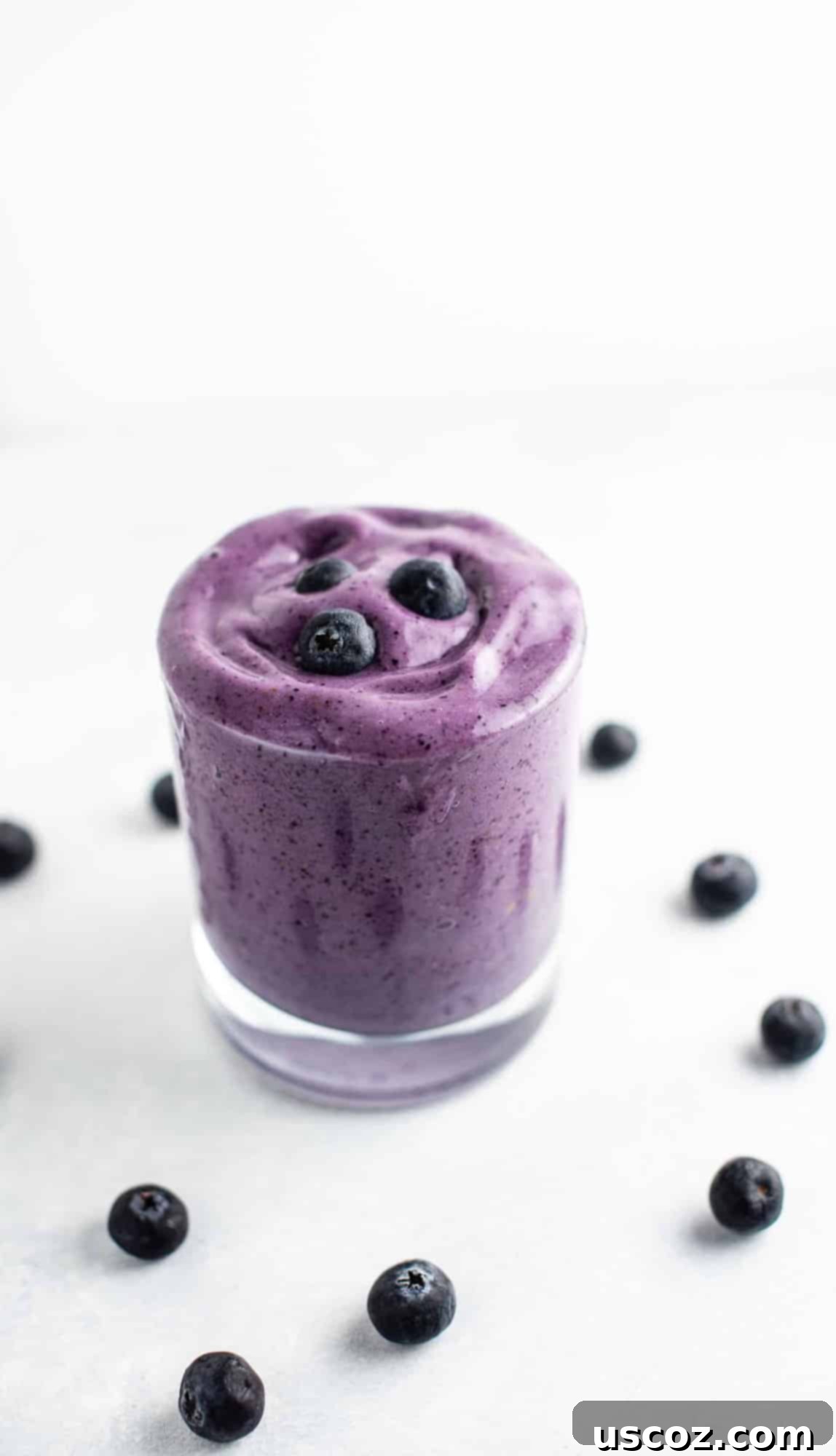Mastering Homemade Smoothies: Your Ultimate Guide to Delicious & Healthy Blends
Have you ever tried to recreate that perfect, creamy smoothie from your favorite café or health food store at home, only to be met with a watery, lumpy, or just plain disappointing result? You’re not alone! Crafting the ideal homemade smoothie is an art, but it’s an art that anyone can master with the right knowledge and a few simple techniques.
This comprehensive guide is designed to transform your smoothie-making skills. We’ll delve into the secrets of creating blends that are not only incredibly delicious but also packed with nutrients, rivaling — or even surpassing — those expensive store-bought options. Get ready to explore diverse smoothie types, discover the best ingredients to use, and learn essential tips and tricks for achieving that perfect texture and flavor every single time. From vibrant green blends to indulgent dessert-like creations, your smoothie game is about to reach new heights!
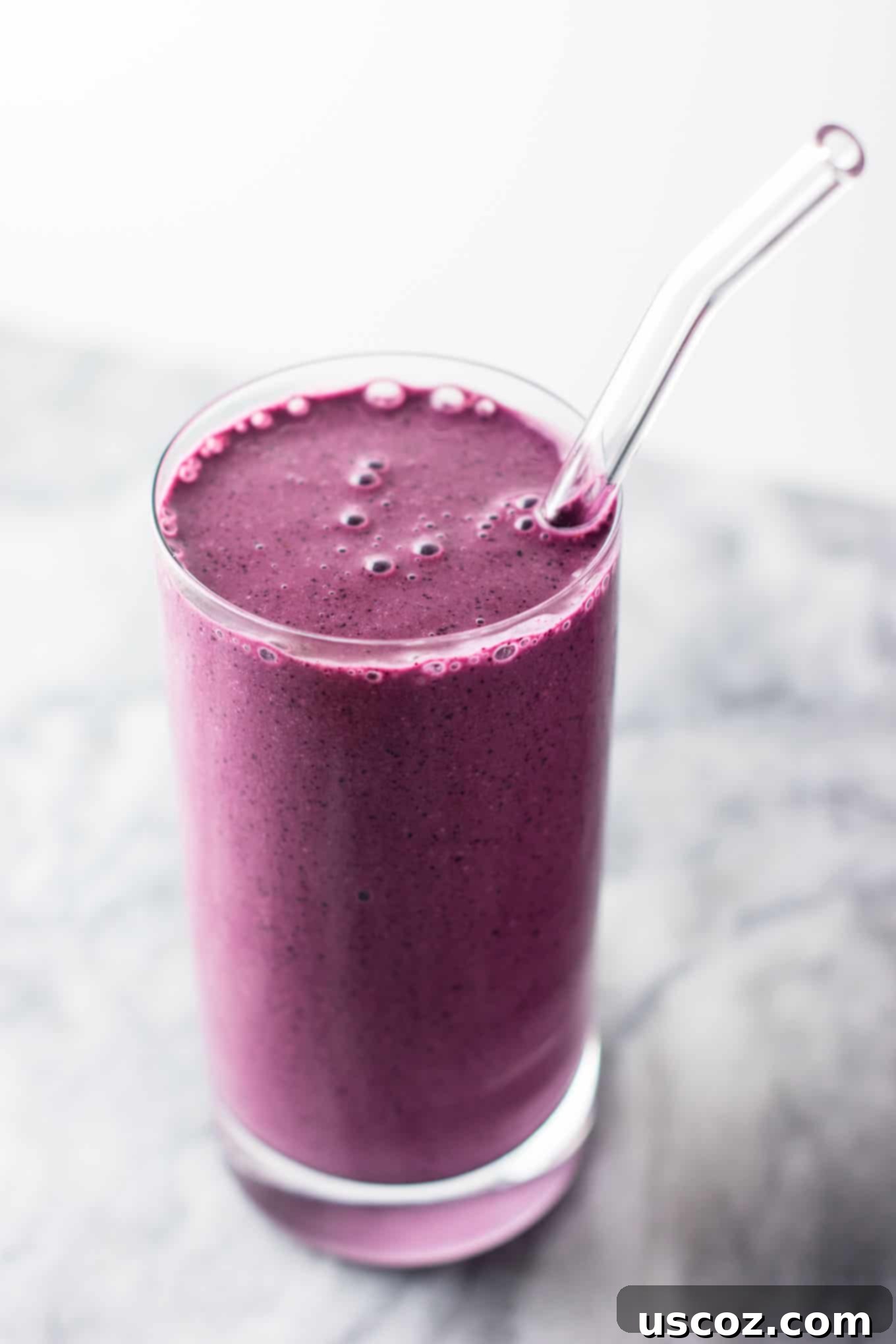
The Essential Ingredients: What to Put in Your Perfect Smoothie
The beauty of making smoothies at home lies in the endless possibilities and the ability to customize them to your taste and nutritional needs. There’s a vast array of ingredients you can incorporate, transforming a simple drink into a power-packed meal or a refreshing snack. To avoid unnecessary trips to the grocery store, begin by exploring what you already have on hand and experiment with various fruits and vegetables to discover your favorite pairings.
Building Your Smoothie: Key Categories
To create a well-balanced and delicious smoothie, think about these core components:
- Base Liquid: This is what gets everything moving in the blender. Options include water, milk (dairy or non-dairy), coconut water, or even fruit juice (use sparingly due to high sugar content).
- Fruits: Provide natural sweetness, fiber, and essential vitamins. Both fresh and frozen fruits work wonderfully. Frozen fruits are particularly great for achieving a thick, creamy texture without adding ice.
- Vegetables: A fantastic way to sneak in extra nutrients. Leafy greens, carrots, and even frozen cauliflower or sweet potato can be surprisingly delicious and often undetectable in taste when paired correctly.
- Protein Source: Essential for satiety, muscle repair, and sustained energy. Greek yogurt, protein powder, nut butters, or even a handful of nuts can do the trick.
- Healthy Fats: Contribute to creaminess and absorption of fat-soluble vitamins. Avocado, nut butters, chia seeds, or flax seeds are excellent choices.
- Boosters & Superfoods: Take your smoothie to the next level with ingredients like chia seeds, flax seeds, hemp hearts, spirulina, matcha, or ginger for added health benefits.
- Natural Sweeteners (Optional): If your fruits aren’t quite sweet enough, a touch of honey, maple syrup, or dates can enhance the flavor.
Delicious Smoothie Combinations to Get Started
Discovering which flavors complement each other is key to creating a truly enjoyable smoothie. Here are some tried-and-true combinations:
- Green Powerhouse: Kale, spinach, and other leafy greens blend seamlessly with frozen banana, pineapple, peaches, and citrus fruits (generally, most fruits except berries, as they can sometimes create an odd color or slightly different flavor profile with greens).
- Berry Bliss: Strawberries, blueberries, blackberries, and raspberries are natural partners for yogurt and various types of milk (dairy or non-dairy), creating a classic and refreshing taste.
- Invisible Veggie Boost: Frozen cauliflower is a game-changer! Its mild flavor is completely masked in most fruit-based smoothies, adding thickness and nutrients without altering the taste.
- Dessert Indulgence: Frozen steamed sweet potato pairs wonderfully with creamy nut butters or cocoa powder, transforming your smoothie into a guilt-free dessert.
- Nutty & Nice: Nut butters like peanut or almond butter are excellent with milk, banana, and apples. A touch of chocolate (cocoa powder or cacao nibs) also elevates this combo!
- Carrot Zing: Carrots blend beautifully with citrus fruits for a vibrant and refreshing drink, or with milk and yogurt for a creamier, milder flavor.
- Cool & Hydrating: Cucumbers pair well with citrus fruits and are a fantastic, hydrating vegetable to add more liquid volume to your smoothie, often replacing some of the water or milk.
For a fantastic starting point, check out this Perfect Green Smoothie Recipe!
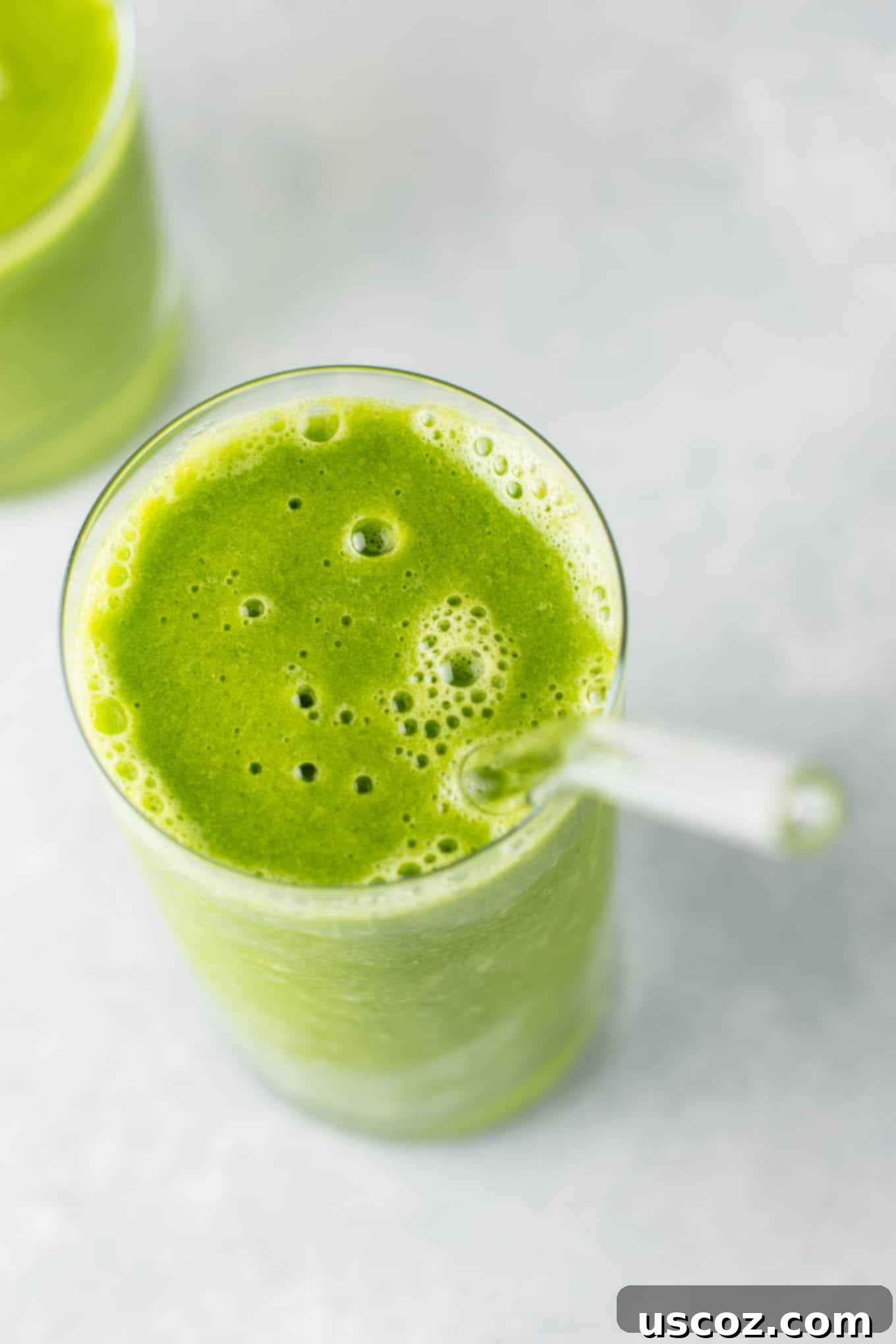
Achieving the Perfect Consistency: How Much Fruit and Liquid to Use
The amount of fruit you add to your smoothie largely dictates its thickness and overall volume. Whether you desire a super-thick, spoonable smoothie bowl or a lighter, sippable drink, controlling your fruit-to-liquid ratio is essential.
For a truly thick, almost ice cream-like smoothie, I highly recommend using primarily frozen fruit. Aim for approximately 1 to 2 cups of frozen fruit for a single large serving. This provides significant bulk and chill without diluting the flavor. If you’re working with fresh fruit, you’ll still want to use a similar quantity (1 to 2 cups), but you’ll need to find other ways to achieve that desired thickness, as fresh fruit adds less viscosity and more water content. This could include adding more ice, a frozen banana, or a scoop of yogurt or protein powder.
A good rule of thumb is to start with less liquid than you think you need. Begin with about ½ cup of your chosen liquid for 1-2 cups of fruit. You can always add more liquid, a tablespoon at a time, until your blender can process the ingredients smoothly and you reach your preferred consistency. Remember, it’s much easier to thin out a thick smoothie than to thicken a watery one!
Here’s a great recipe for a naturally sweet and healthy option: Healthy Peach Smoothie.
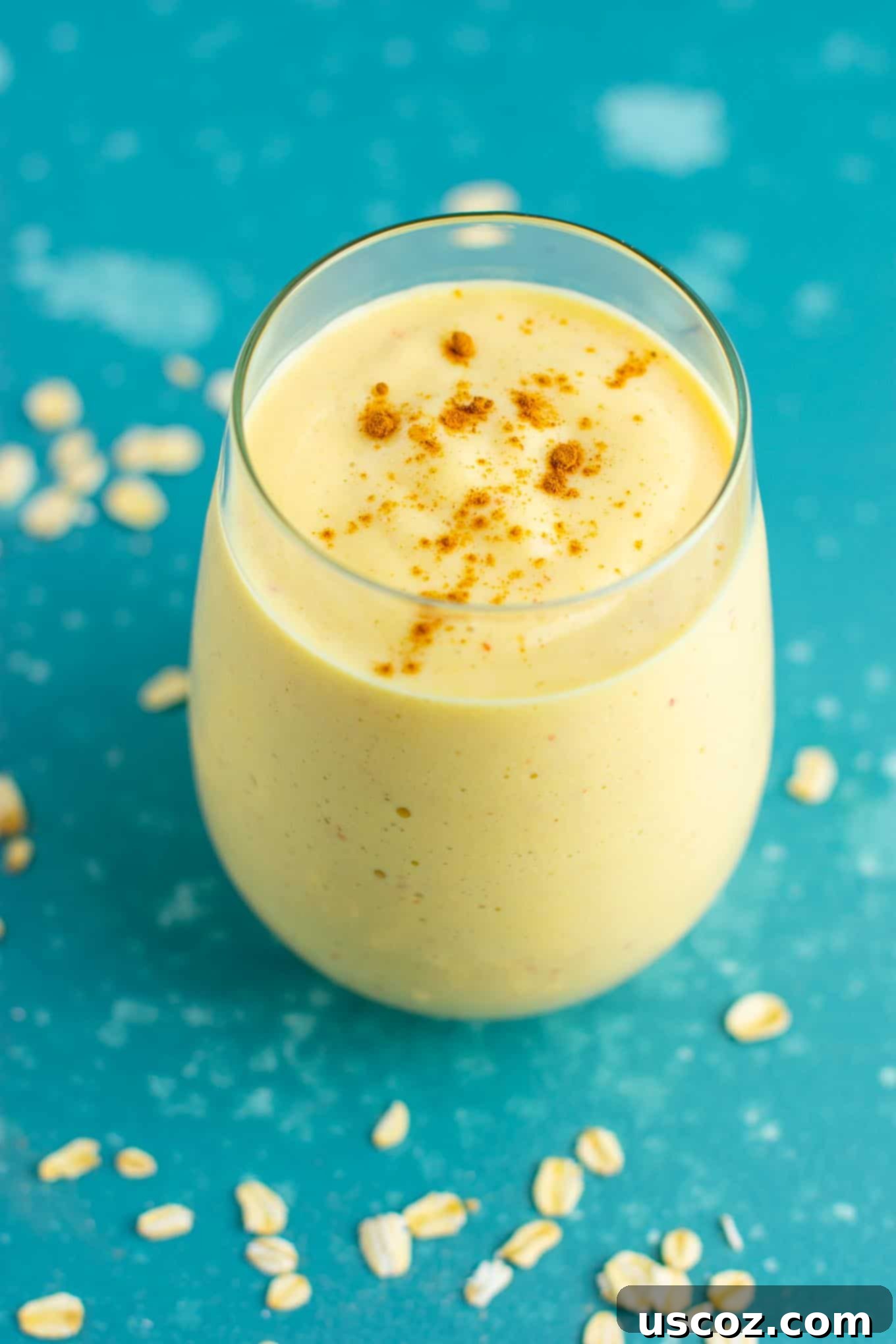
Blending for Success: Tips and Blender Recommendations
The type of blender you use significantly impacts the final texture of your smoothie. For those who dream of super thick, velvety smooth, and chunk-free smoothies, investing in a high-speed blender is a game-changer. Brands like Blendtec or Vitamix truly elevate the blending experience, easily pulverizing frozen fruits, tough greens, and ice into a silky consistency. My Blendtec, for example, transformed my daily routine and gets used almost every day for its efficiency and power.
If you’re using a regular blender, you can still make great smoothies, but you might need to adjust your expectations slightly. Smoothies made with hard frozen vegetables or large pieces of whole fruit may be more challenging to get perfectly smooth. You might encounter small chunks or a slightly less creamy texture. To help a standard blender, try these tips:
- Layer ingredients strategically: Always add your liquid first, then soft ingredients (like fresh spinach), followed by fresh fruit, and finally, frozen fruit and ice on top. This helps the blades catch the liquid and pull everything down more effectively.
- Chop larger ingredients: Cut larger fruits and vegetables into smaller pieces before adding them to the blender.
- Use the tamper (if available): High-speed blenders often come with a tamper that allows you to push ingredients into the blades without stopping the machine, which is incredibly helpful for thick blends.
- Pulse and scrape: If your blender is struggling, pulse it a few times, then stop, remove the lid, and use a spatula to scrape down the sides before blending again.
Are Breakfast Smoothies Good for You? Fueling Your Morning the Healthy Way
Absolutely! Smoothies are an excellent, convenient, and delicious way to kickstart your day with a nutritious breakfast. They offer a fantastic opportunity to pack in a variety of vitamins, minerals, fiber, and other essential nutrients that can keep you energized and focused.
Consider this peanut butter banana smoothie recipe as a prime example: it’s a wonderfully balanced, protein-packed drink featuring the natural goodness of bananas, creamy milk, refreshing ice, yogurt for probiotics, and just a touch of honey for natural sweetness. Frozen bananas, in particular, are a marvelous addition to any breakfast smoothie, contributing a creamy texture and natural sweetness.
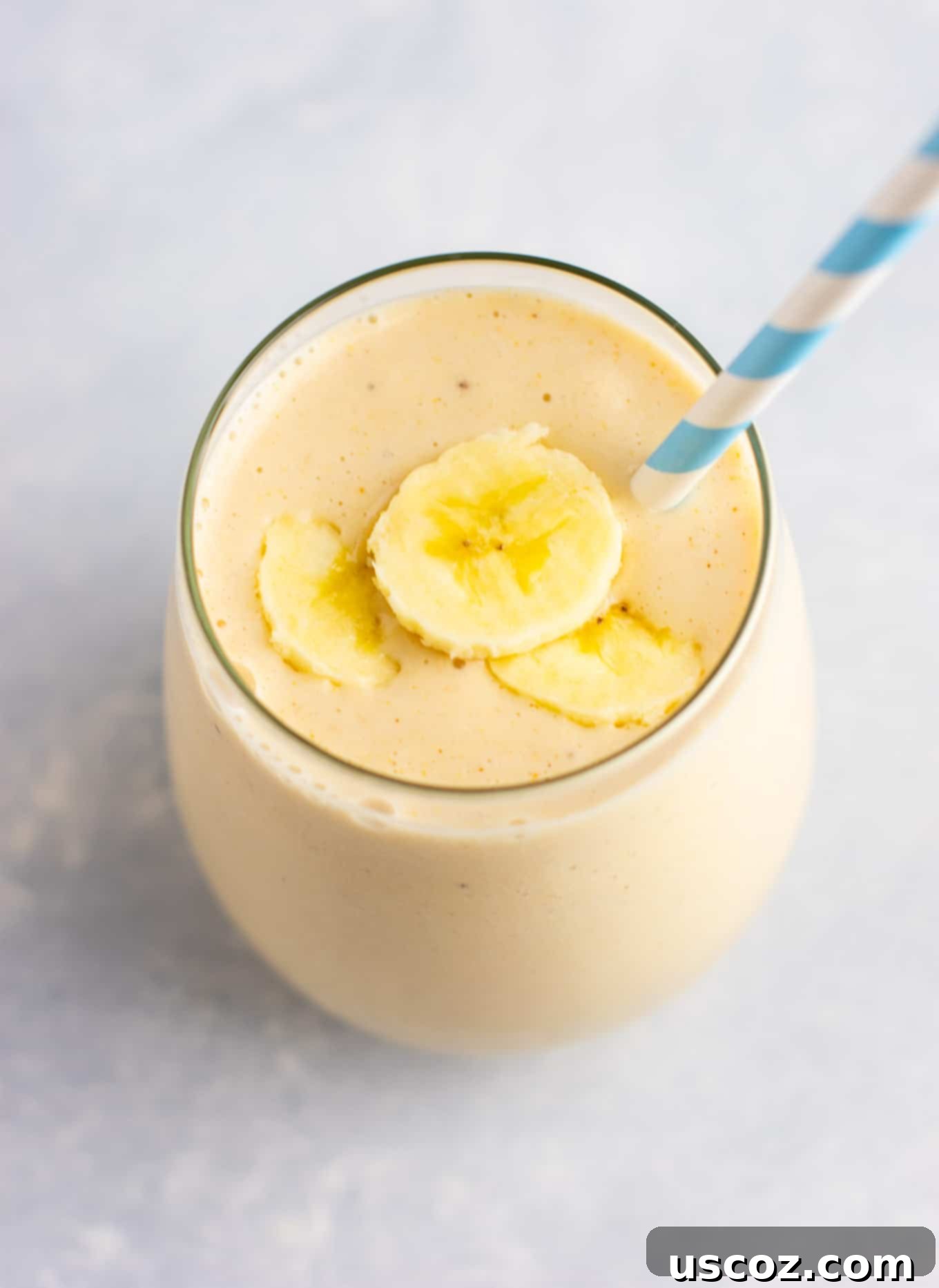
To ensure your breakfast smoothie keeps you feeling full and satisfied until your next meal, always remember to include a good protein source. Options like Greek yogurt, a scoop of your favorite protein powder, or a generous dollop of nut butter are excellent choices. These ingredients help slow down digestion and prevent that mid-morning energy crash, making your smoothie a truly effective and healthy start to your day.
Choosing Your Base: What Liquid to Put in Your Smoothie
The liquid you choose for your smoothie acts as the base, influencing its texture, flavor, and overall nutritional profile. There are several fantastic options, each bringing something different to the blend:
- Water: The simplest and lowest-calorie option. Ideal if you want to highlight the flavors of your fruits and vegetables without adding extra calories or richness. It’s perfect for a light, refreshing drink.
- Dairy Milk (Whole or 2%): Adds a rich, creamy texture and a good source of protein and calcium. Whole milk provides the most creaminess, while 2% offers a good balance.
- Non-Dairy Milks: A popular choice for those avoiding dairy or seeking specific flavors.
- Almond Milk: Light, nutty, and generally low in calories. Unsweetened vanilla almond milk is a versatile choice that complements many fruit and vegetable combinations without overpowering them.
- Soy Milk: Offers a creamy texture and is comparable to dairy milk in protein content, making it a good option for satiety.
- Coconut Milk (from carton, not canned): Provides a subtle tropical flavor and a lighter consistency than canned coconut milk.
- Oat Milk: Known for its creamy texture and slightly sweet taste, it’s excellent for making thick, indulgent smoothies.
- Coconut Water: A natural source of electrolytes, perfect for a hydrating, post-workout smoothie. It has a lighter consistency and a subtle tropical sweetness.
- Fruit Juice: While it can add sweetness and flavor, fruit juice (even 100% juice) is often high in natural sugars and lacks the fiber of whole fruit. Use sparingly, or dilute with water, especially if you’re mindful of sugar intake.
Personally, I often gravitate towards unsweetened vanilla almond milk, vanilla soy milk, or whole milk for their versatility and the creamy body they lend to my smoothies. However, if you prefer a lighter option, using water in your smoothie is absolutely possible and can yield a delicious result!
If you’re looking to create delicious blends without any dairy, this guide on How to Make a Smoothie Without Milk is incredibly helpful. For a truly refreshing and milk-free option, try this invigorating Ginger Peach Detox Smoothie!
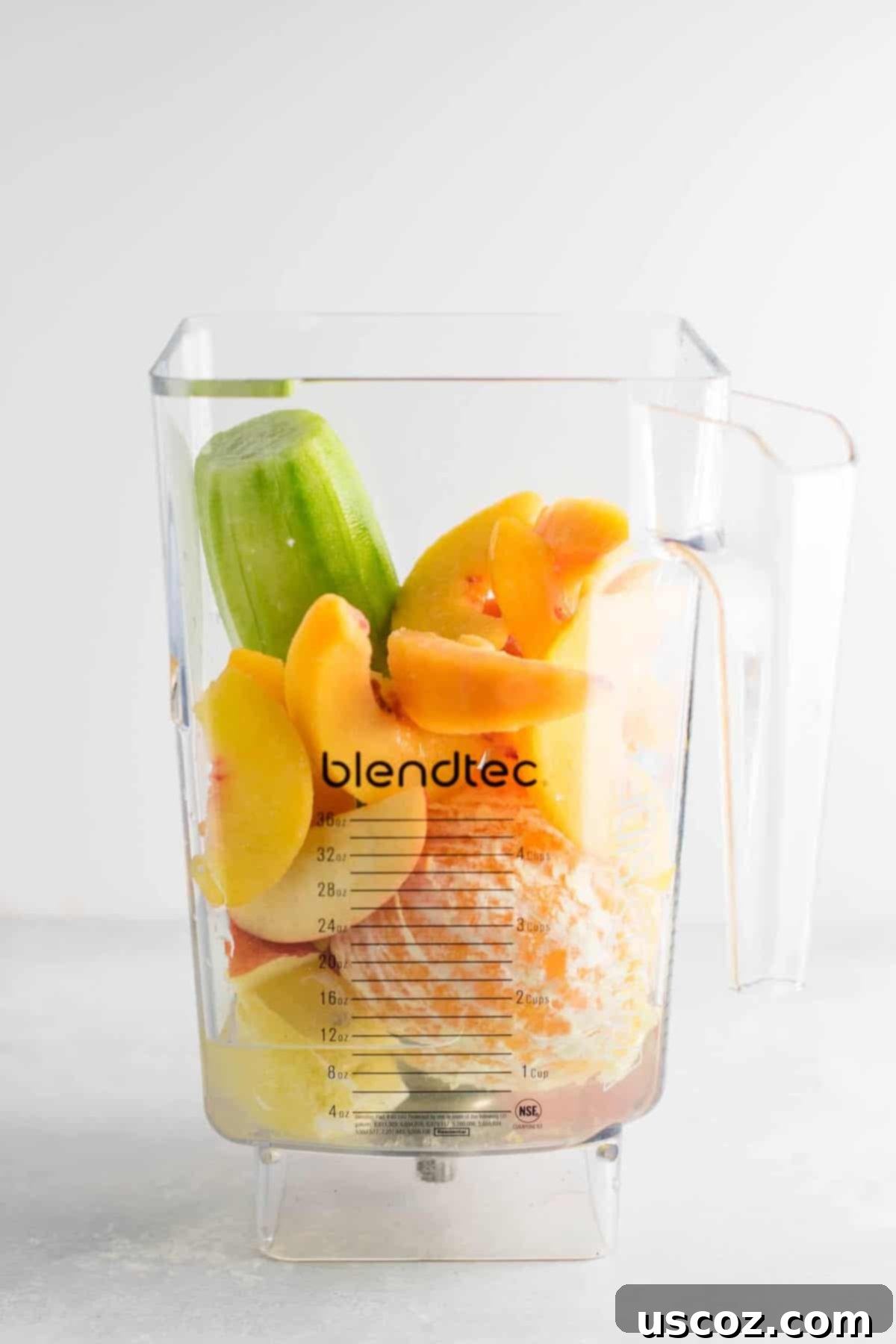
Sweetening Your Smoothie Naturally: Tips for Perfect Flavor
One of the best aspects of fruit smoothies is that, ideally, they’ll be naturally sweet enough thanks to the inherent sugars in the fruits themselves! This is especially true when you use naturally sweeter fruits like ripe pineapples, peaches, mangoes, or very ripe bananas. These fruits provide a delightful sweetness without the need for any added sweeteners.
Take, for instance, this frosty Pineapple Smoothie, which achieves its perfect sweetness with just four simple ingredients: frozen pineapple, frozen banana, unsweetened Greek yogurt, and unsweetened almond milk. The combination of frozen fruits makes it wonderfully sweet and creamy on its own.
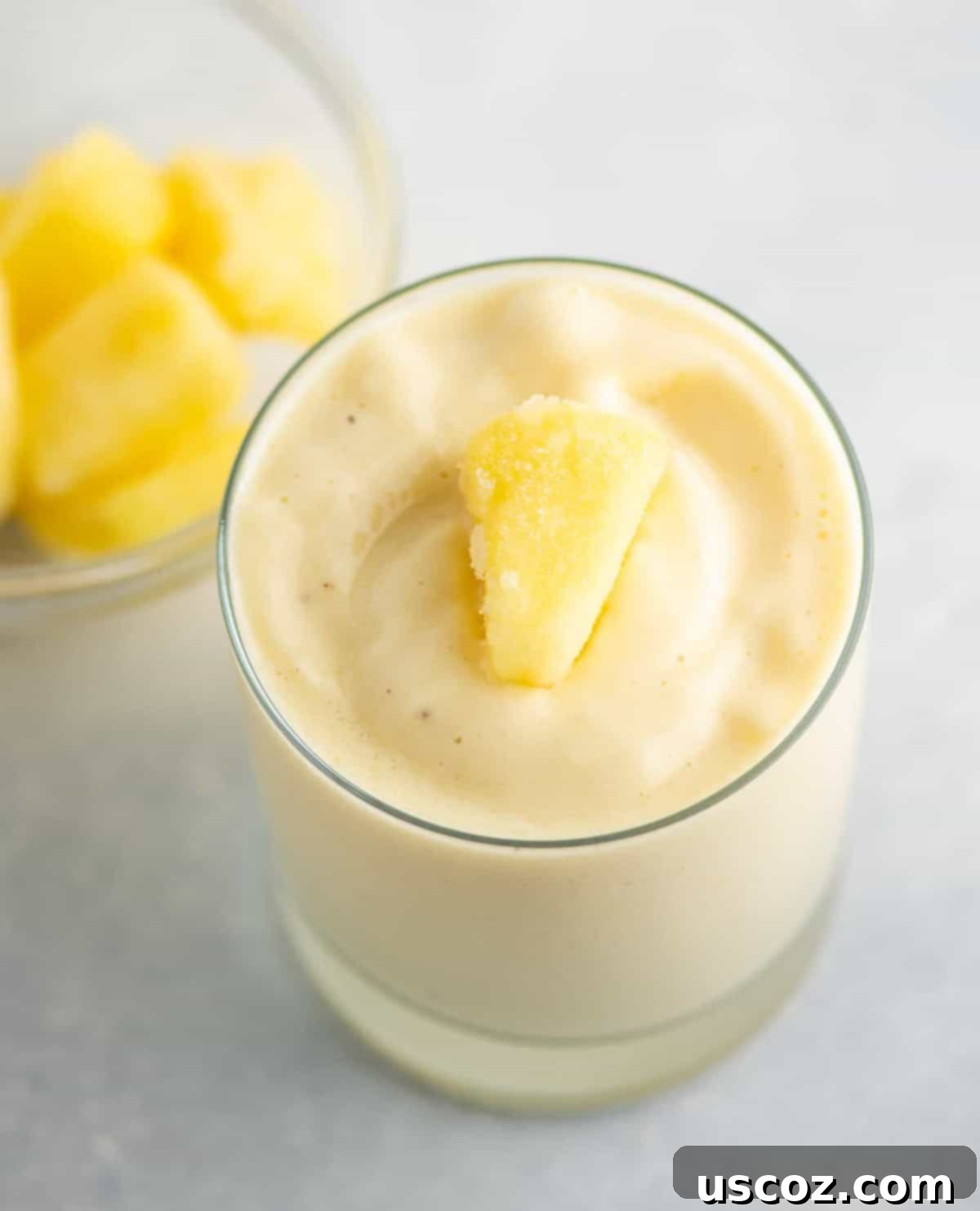
However, if your smoothie isn’t quite sweet enough for your liking, don’t reach for artificial sugars. Instead, opt for natural sweeteners. Honey and pure maple syrup are fantastic choices that add a delicate sweetness and a touch of flavor complexity. Typically, just 1-2 teaspoons will be plenty to enhance the sweetness without overpowering the natural fruit flavors. You can also add a few dates for a caramel-like sweetness and extra fiber.
This delightful Carrot Cake Smoothie, packed with nutritious veggies, uses just a small amount of pure maple syrup to achieve its perfectly balanced sweetness!
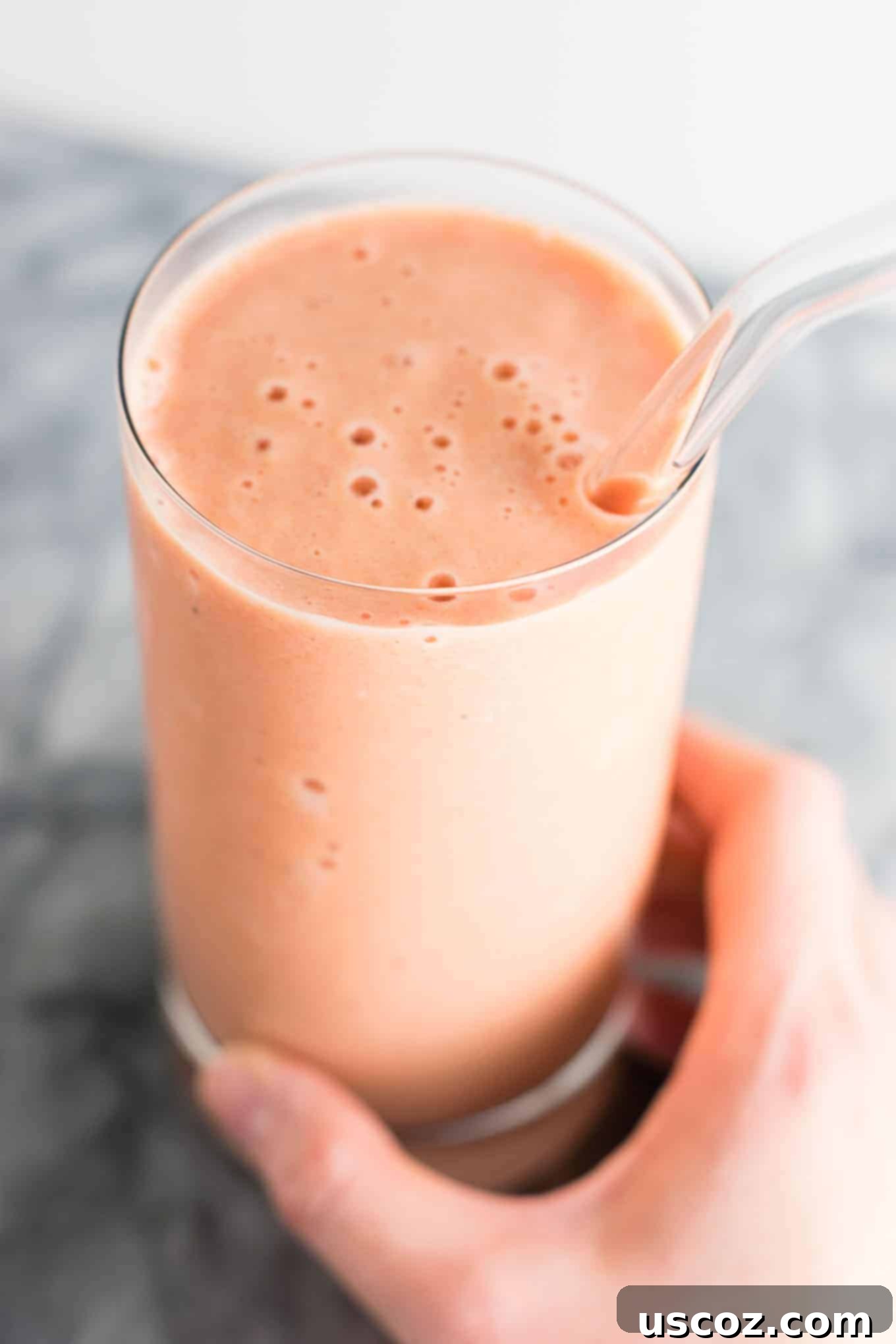
Debunking Myths: Are Fruit Smoothies Unhealthy?
There’s a common misconception that all fruit smoothies are unhealthy due to their sugar content. Let’s set the record straight: fruit smoothies made without *added* sugar are absolutely healthy and incredibly beneficial for you! The key distinction here is between natural fruit sugar and refined, artificial white sugar.
Natural fruit sugar (fructose) is entirely different from the added sugars found in many processed foods and store-bought drinks. When you consume whole fruits or blend them into a smoothie, you’re not just getting natural sugars; you’re also benefiting from a rich array of fiber, vitamins, minerals, and antioxidants. The fiber in whole fruits helps slow down the absorption of sugar into your bloodstream, preventing rapid spikes and crashes in blood glucose levels that are often associated with refined sugars.
Fruits offer numerous health benefits, contributing to hydration, gut health, and overall well-being. A fruit smoothie is a fantastic and convenient way to ensure you’re getting some of your daily recommended fruit intake. It makes consuming a variety of fruits enjoyable and accessible, especially for those who struggle to eat enough whole produce. So, embrace the natural sweetness and nutritional power of fruit smoothies!
Try this nutrient-packed and naturally sweet blueberry banana smoothie for a healthy boost!
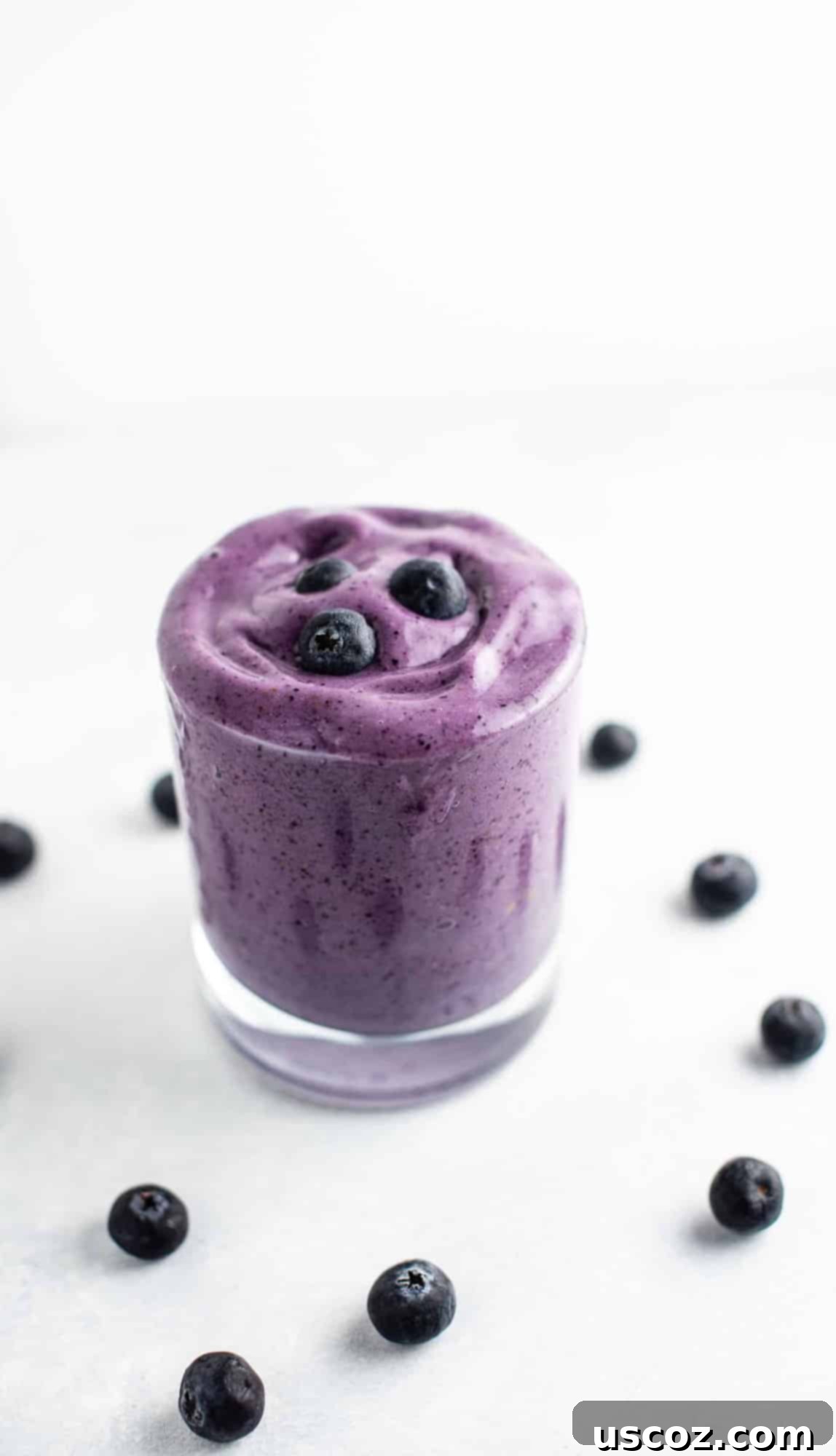
The Secret to Thickness: Do Ice Cubes Make Smoothies Thicker?
Yes, absolutely! Ice cubes are an excellent and readily available ingredient to help you achieve a thicker, colder smoothie consistency. They add volume and chill without contributing extra fruit sugars or calories, making them a versatile choice for modifying your smoothie’s texture. I frequently use ice cubes to increase the thickness of smoothies made with fresh fruit, like this delightful Strawberry Smoothie, or even to fine-tune a frozen fruit smoothie that isn’t quite as dense as I’d prefer.
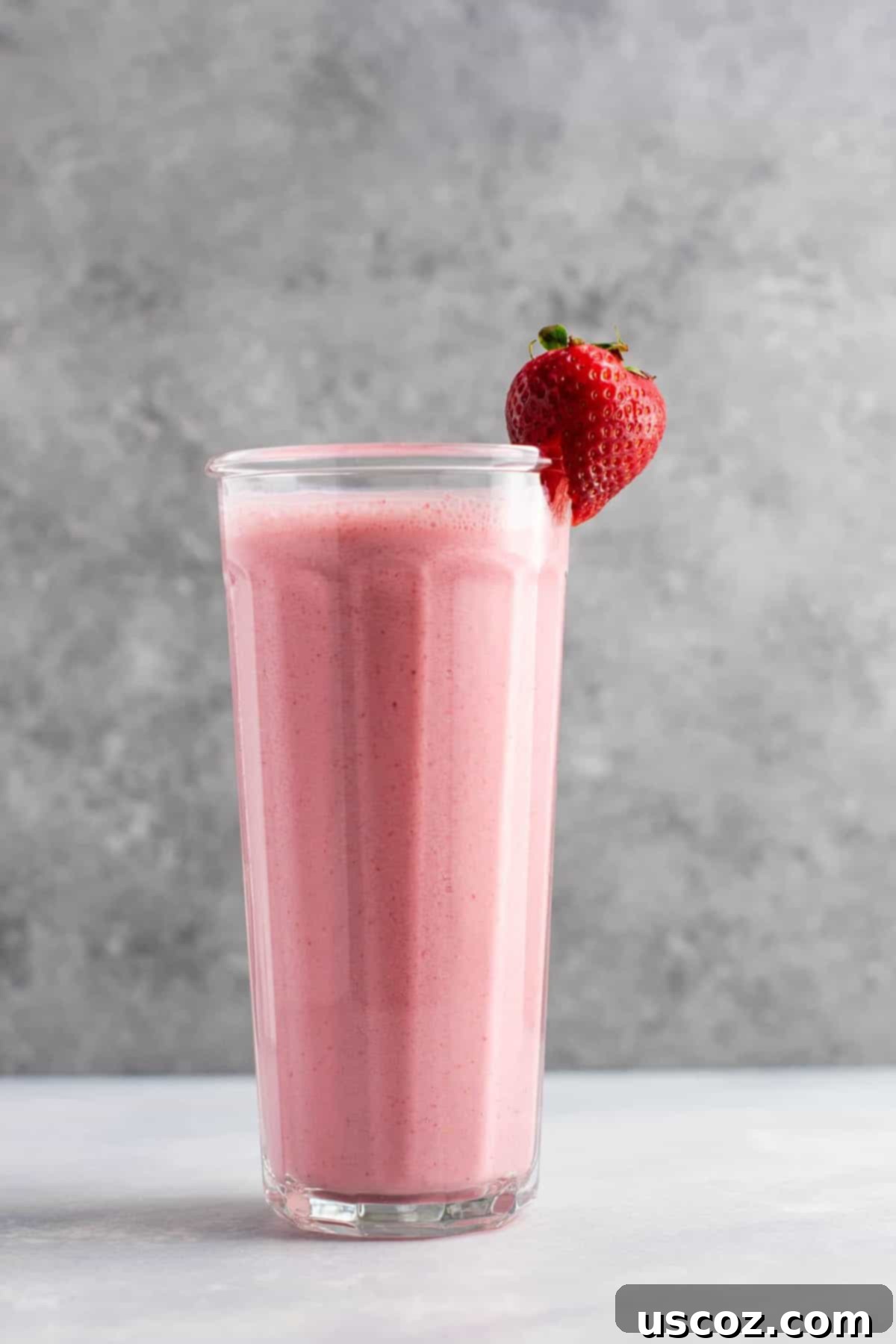
For me, I often crave smoothies with a super thick, almost ice cream-like texture, and incorporating ice cubes is incredibly helpful in achieving this desired consistency. However, it’s worth noting that to get the ice completely blended without leaving any chunky bits in your drink, a high-speed blender is usually necessary. A less powerful blender might struggle, resulting in a less smooth finish. For best results, ensure your ice is fresh and your blender is up to the task!
Crafting Creamy Smoothies Without Yogurt: Top Tips
If you’re aiming for a thick, luxurious smoothie but prefer to skip the yogurt, you’re in luck! There are several excellent methods to achieve that coveted creamy texture:
- Embrace Frozen Bananas: Frozen bananas are a smoothie’s best friend. When blended, they create an incredibly thick, naturally sweet, and unbelievably creamy texture that mimics soft-serve ice cream. For best results, peel ripe bananas, break them into chunks, and freeze them in an airtight bag overnight.
- Prioritize Frozen Fruit: Instead of fresh fruit, which adds more water, opt for a higher ratio of frozen fruit. Frozen berries, mango, pineapple, and peaches all contribute to a thicker consistency. Start with just enough liquid to get your blender blades moving, and add more only if absolutely necessary, one tablespoon at a time, until smooth.
- Incorporate Frozen Vegetables: Don’t underestimate the power of frozen veggies! Frozen steamed sweet potato, zucchini, or cauliflower can add substantial thickness and a boost of nutrients without altering the flavor significantly. They blend down to a smooth, creamy base.
- Add Healthy Fats and Fibers: Ingredients like avocado, chia seeds, and flax seeds are fantastic for thickening. Avocado adds a luscious creaminess and healthy fats, while chia and flax seeds absorb liquid and expand, creating a gel-like consistency that thickens the entire smoothie. Just a tablespoon or two can make a big difference.
- Strategic Use of Ice: As mentioned, ice cubes are your ally for thickness. Add them gradually until your smoothie reaches the desired density. Remember, a powerful blender will yield the smoothest, chunk-free result when using ice.
- Nut Butters: A generous scoop of peanut butter, almond butter, or cashew butter not only adds protein and healthy fats but also contributes to a wonderfully thick and creamy texture.
This Sweet Potato Smoothie is a perfect example of a wonderfully thick and creamy blend achieved without any yogurt!

For a thick, fruit-based smoothie that requires only a few ingredients and no yogurt, be sure to check out this fantastic 3-ingredient Strawberry Banana Smoothie recipe!
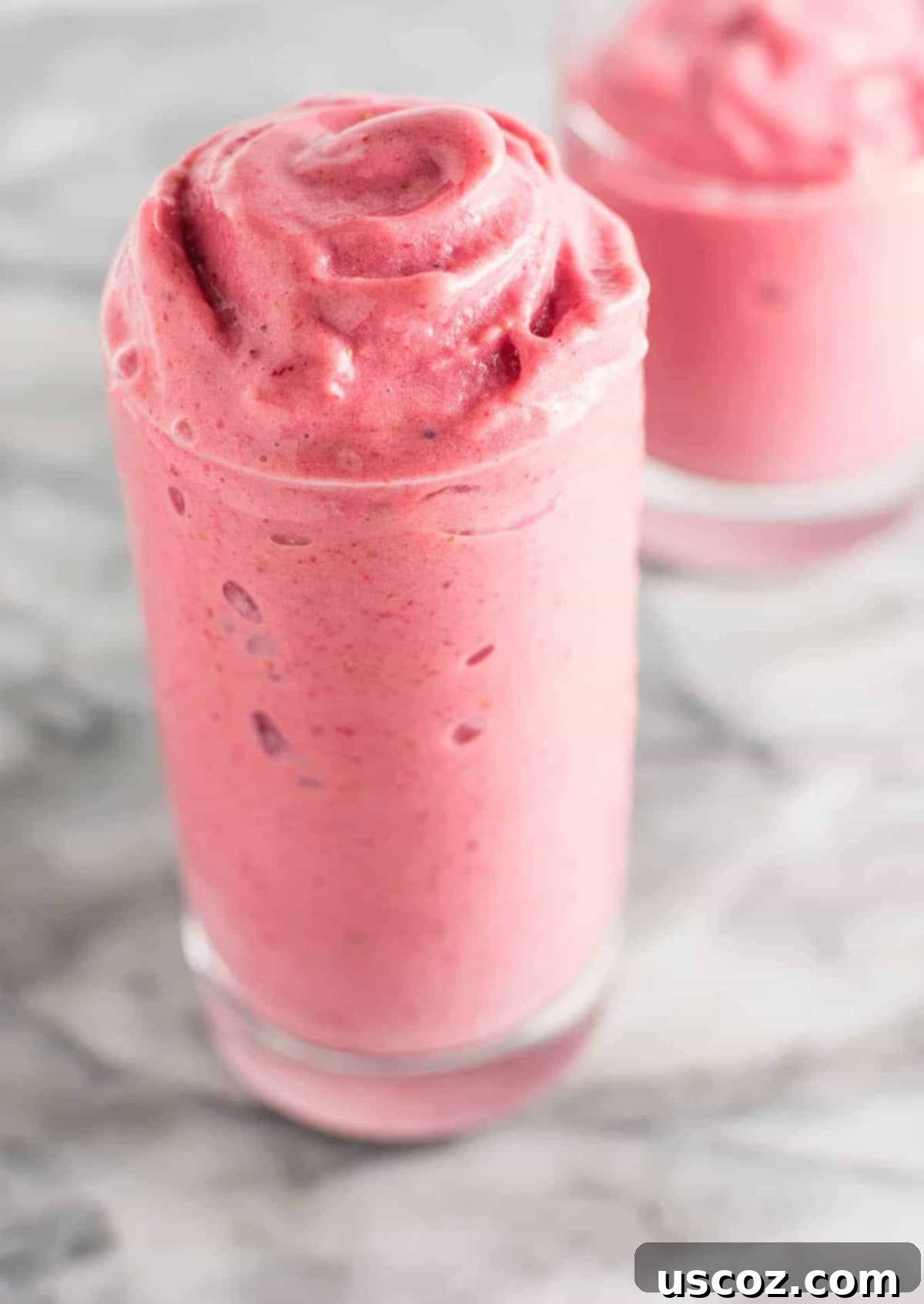
Embracing the Daily Blend: Can I Drink Smoothies Every Day?
Absolutely, yes! Incorporating smoothies into your daily diet is a fantastic and highly beneficial way to boost your intake of fruits, vegetables, and other essential nutrients. Smoothies are incredibly versatile, making them suitable for almost everyone, from busy adults to picky eaters and even toddlers. My own toddler, for instance, has been enjoying them since he was just one year old and eagerly helps in the preparation process!
Making smoothies a regular part of your routine offers numerous advantages:
- Nutrient Density: They’re an efficient way to pack a significant amount of vitamins, minerals, fiber, and antioxidants into a single serving.
- Convenience: Quick to prepare and easy to consume on the go, perfect for busy mornings or as a speedy snack.
- Hydration: With their liquid base, smoothies contribute to your daily fluid intake.
- Digestive Health: The fiber from whole fruits and vegetables supports a healthy digestive system.
- Weight Management: When balanced with protein and healthy fats, smoothies can be satisfying meal replacements that help manage calorie intake.
- Customization: You have complete control over ingredients, allowing you to tailor them to your specific dietary needs, preferences, and health goals.
If you’re looking to effortlessly add more nutrient-rich foods into your life, starting with one smoothie a day is a simple yet powerful change. Observe how great you feel with this small but impactful dietary adjustment. It’s a sustainable habit that can significantly contribute to your overall health and well-being.
Indulgent & Healthy: How to Make Smoothies That Taste Like Dessert
Who says healthy can’t be incredibly delicious and satisfying? Dessert-inspired smoothies are one of my absolute favorite ways to enjoy a sweet treat without the guilt. If you often wake up with a craving for something sweet, or you’re looking for a lighter, more nutritious alternative to traditional desserts, these recipes are perfect for you. The key is to use naturally sweet fruits and clever flavor combinations to mimic classic dessert profiles.
Here are some delectable dessert smoothie ideas that will fool your taste buds into thinking you’re indulging in something truly decadent:
- Creamy Fruit & Spice: Combine frozen ripe bananas with a touch of cinnamon, vanilla extract, and a splash of milk for a “banana bread” or “vanilla milkshake” feel.
- Chocolatey Goodness: Use cocoa powder or raw cacao powder with frozen bananas, a hint of maple syrup, and your favorite milk for a rich, healthy chocolate shake. Adding a spoonful of nut butter makes it even more indulgent.
- Fruity & Decadent: Berries, especially when combined with a creamy base like Greek yogurt or a frozen banana, can mimic cheesecakes or pies. Add a tiny crumble of oats or graham crackers on top for extra texture.
- Nut Butter Dream: Peanut butter or almond butter with chocolate and banana is a classic combination that always feels like a treat.
- Sweet Potato Surprises: Cooked and frozen sweet potato can add an incredible creaminess and natural sweetness, making it a wonderful base for dessert-like smoothies, especially when combined with spices like cinnamon, nutmeg, or pumpkin pie spice.
Dive into these delicious recipes to satisfy your sweet tooth the healthy way:
Strawberry Cheesecake Smoothie – It tastes just like the real thing, but it’s good for you!

Healthy Chocolate Milkshake – A rich, chocolatey treat that’s surprisingly wholesome!
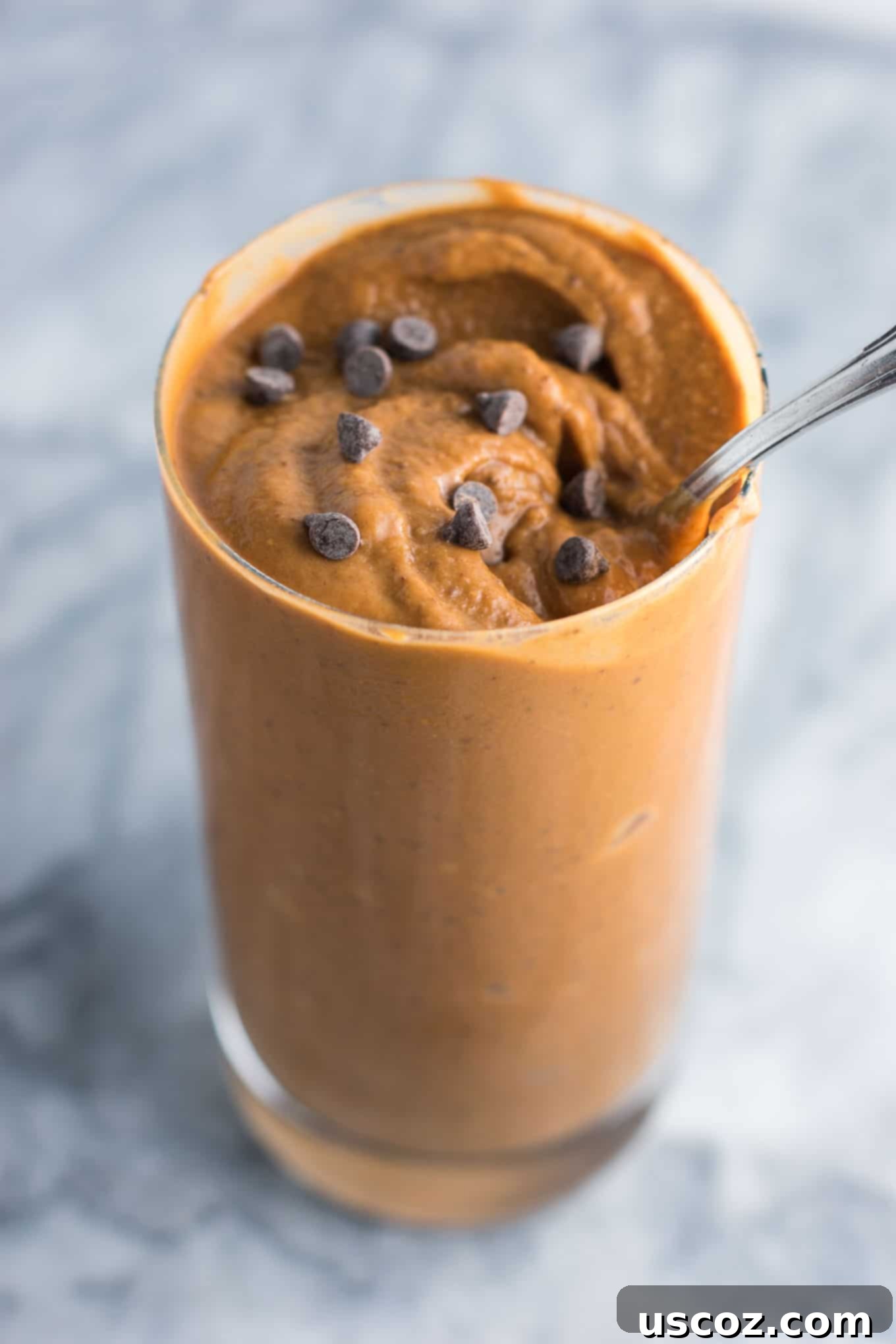
Chocolate Peanut Butter Banana Smoothie – The ultimate trio for a satisfying sweet craving.
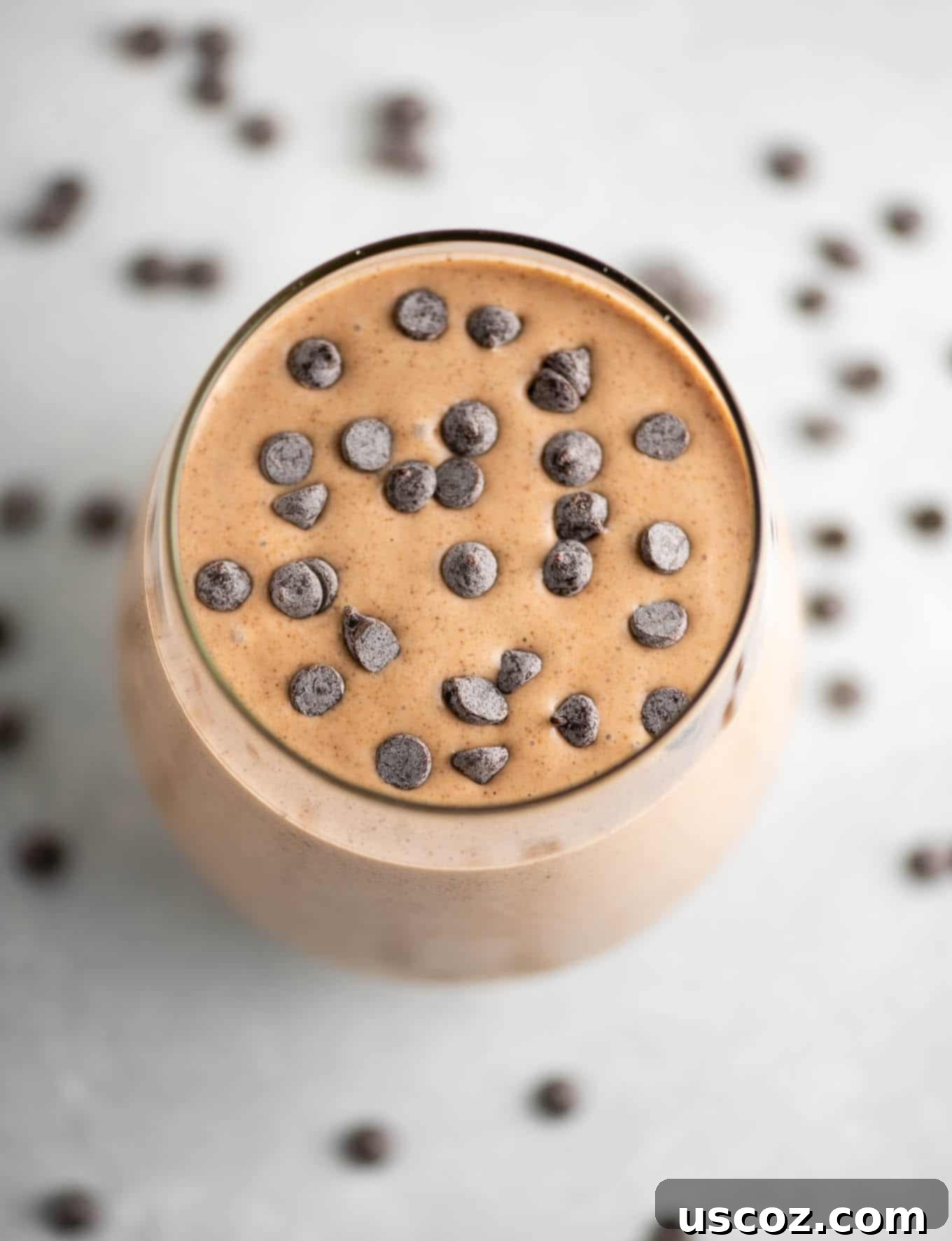
I genuinely hope this comprehensive guide has been helpful and inspired you to confidently venture into making your own incredible smoothies at home more often. The journey to a healthier, more delicious lifestyle starts with simple, informed choices.
Happy blending, and remember, if you have any questions or need further tips, please don’t hesitate to leave a comment. Your perfect homemade smoothie is just a blend away!
**Self-Correction/Review:**
1. **SEO-friendly `
